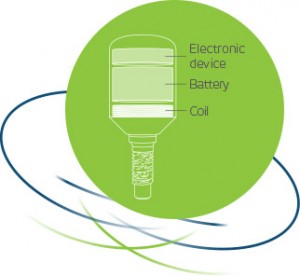MED: Using electromagnetics to accelerate bone formation and osseointegration?
 This is the first of several posts, where we will open a topic a discussion based on an interesting new product we found at the recent International Dental Show (IDS) in Cologne. In this post, we invite your comments on a new device called MED (Miniaturized Electromagnetic Device) from magdent.
This is the first of several posts, where we will open a topic a discussion based on an interesting new product we found at the recent International Dental Show (IDS) in Cologne. In this post, we invite your comments on a new device called MED (Miniaturized Electromagnetic Device) from magdent.
Developed by a periodontist, Magdent™s MED utilizes the well-known and clinically accepted treatment method of electromagnetics fields to stimulate bone formation, improve bone density & suppress peri-implantitis and peri implant mucositis. Magdent™s MED ” incorporates a battery, an electronic device and a coil that fits most implant models in much the same way as today™s simple healing cap. The unique design eliminates the external devices currently used during implant surgery.
In terms of research, there is a histological and microcomputed tomography study in a rabbits that has been accepted for publication by Clinical Oral Implants Research. More information about this this study and additional research is available here.
Below you can also watch a video introduction about the product.
What are your thoughts on the MED and the possibility of using an electromagentic field to stimulate bone formation and suppress peri-implantitis?


















